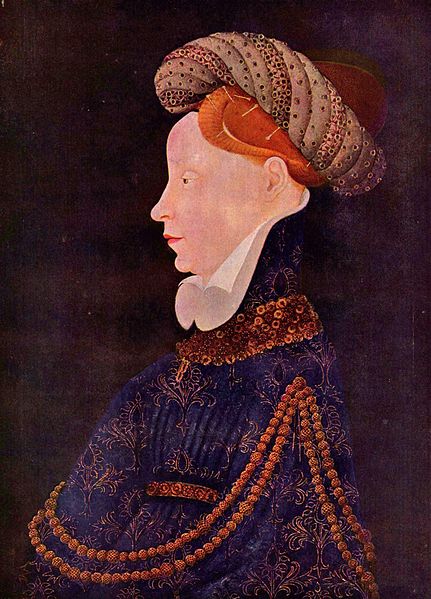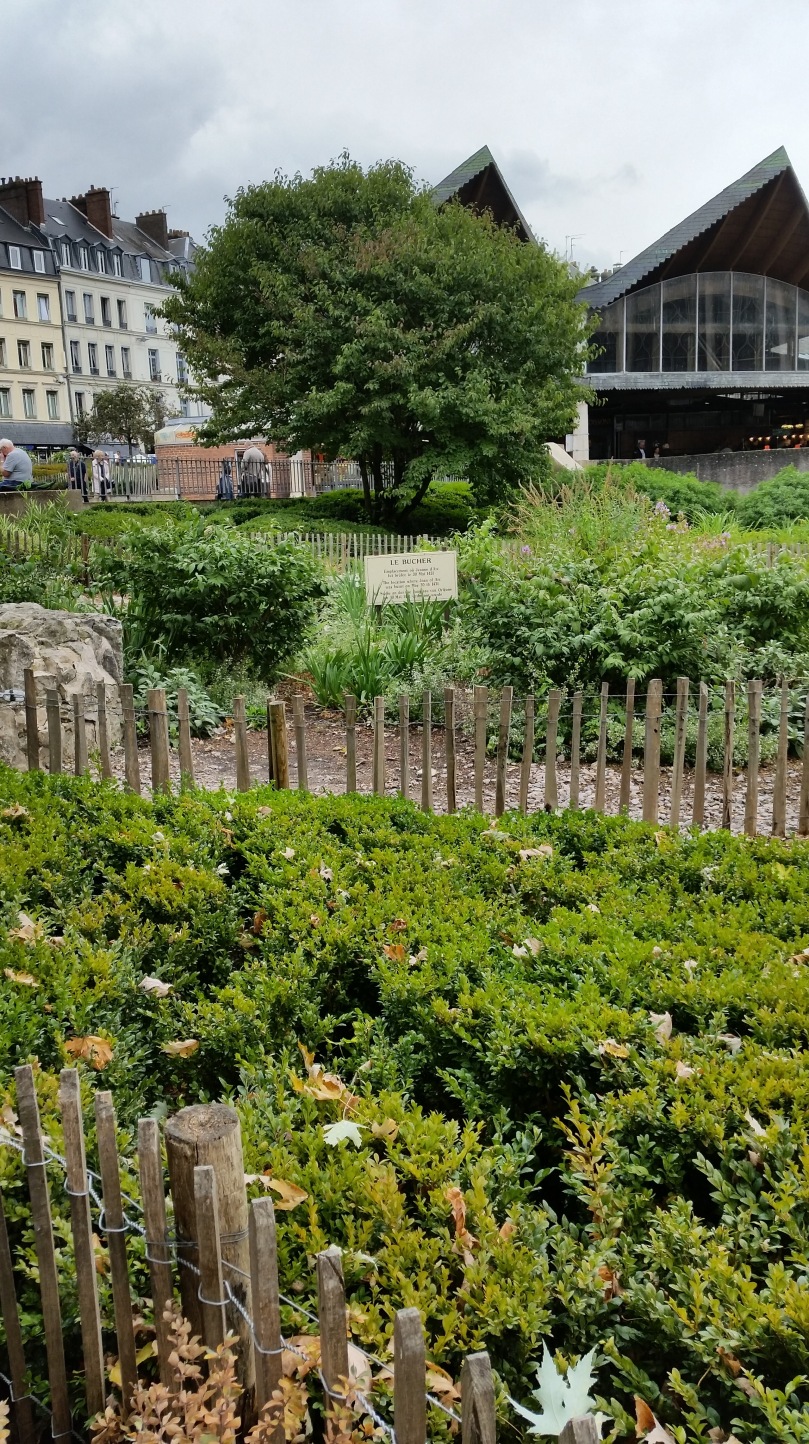
Isabella of Valois, the eldest child of King Charles VI of France and Queen Isabeau of Bavaria was only seven years old when she was married to King Richard II of England. Because of her youth, she had no political influence and grew up in the care of governesses. During Richard’s reign, England experienced a lot of strife and unrest. Richard became increasingly authoritarian and paranoid, causing a lot of trouble with his nobles and with his cousin Henry of Bolingbroke. He finally sentenced Bolingbroke to exile.
In the spring of 1399, Richard was planning an expedition to Ireland. After meeting with Isabella and giving her a farewell kiss, he departed. She would never see him again. While he was gone, Bolingbroke returned and deposed Richard, taking the throne as King Henry IV. Richard was imprisoned in Pontefract Castle and most likely was murdered there in February of 1400. After much wrangling between Henry IV and Isabella’s parents, she returned to France in July of 1401. She re-entered her mother’s household. She was a consecrated Queen of England so her mother made sure she had ladies surrounding her that were of higher rank than those she had when she was a princess.
In May of 1406, Isabella was married to her cousin, Charles d’Orléans, son of Duke Louis d’Orléans. Louis was murdered in 1407 on the orders of John the Fearless, Duke of Burgundy and Charles took the title of Duke and became a warlord at the age of fourteen. He was five years younger than Isabella and she may have resented being the wife of a mere Duke when she had been Queen of England. But the relationship soon grew to be stable and loving. The marriage was consummated three years later and Isabella became pregnant. She gave birth to a daughter named Joan (or Jane or Jeanne) on September 13 at the château of Blois and then she passed away the next day.
Joan’s father was devastated by Isabella’s death. He was left with his infant daughter, three brothers under the age of twelve and a sister aged three. On August 15, 1411, he married Bonne of Armagnac but she was only eleven years old. Eight months later, he arranged a betrothal for Joan to John I Count of Alençon, his good friend and companion in the French civil war that was raging at the time. Because Charles’ father had been murdered by the Burgundians, Charles became the head of the opposition party in the civil war. The party was called the Armagnac’s after Charles second wife.
In the summer of 1411, Charles was preparing to be away from home fighting during the war. It’s possible there was an outbreak of plague nearby. He arranged for Joan, his sister Margaret and brother John to be taken by one of his officers from Blois to his castle at Châteauneuf-sur-Loire. By 1415, she was back at Blois. Joan’s father was constantly in touch with her caretakers, following her progress as she grew up. That same year, Joan’s betrothed John I Count of Alençon was elevated to the title of Duke.
France and England were now in a continuation of the Hundred Years War and Charles was gathering an army to fight. Before he left, he gave Joan a gift of the ABC’s in parchment with gilded letters. He bid her goodbye. Charles fought at the Battle of Agincourt and was captured afterwards and taken prisoner in England. He remained there for twenty-five years and Joan would never see him again. John I, Duke d’Alençon, Joan’s betrothed, died during the battle.

In 1421, Joan was betrothed to John II Duke d’Alençon and Count of Perche, the son of her prior betrothed. He reputedly was very handsome. They were married in 1424 and the couple would be childless. Shortly after his marriage, John fought at the Battle of Verneuil and was captured by the English. He was held prisoner at Le Crotoy until 1429. He was forced to pay two hundred thousand saluts d’or as a ransom and was compelled to sell all his possessions to the English and the Duke of Brittany. When he left prison, he was called “the poorest man in France”.
After his release from prison, John heard about Joan of Arc. She had come to Charles VII at Chinon and promised him she would liberate France from the English and have him crowned. She requested the King give her an army to lift the siege of Orléans. Alençon enthusiastically went to Chinon and met Joan of Arc. They became good friends and she called him “le beau duc” (noble or fair Duke). He accompanied her on many campaigns, including the Siege of Orléans. He presented her with the gift of a horse.

In 1429, John brought Joan of Arc to meet his wife Joan. They enjoyed each other’s company. Joan confessed to Joan of Arc she was fearful for her husband’s safety and wanted to be with him. Joan promised to send him back to her safe and sound. When Joan of Arc was burnt at the stake by the English at Rouen on May 30, 1431, Alençon was one of the people most distraught by her loss. His wife Joan died on May 19, 1432 at Angers. Alençon regained his lands in 1449 and married Marie of Armagnac in 1437. He died in 1476 at the age of sixty-seven in Paris.
Further reading: “The Sister Queens: Isabella and Catherine de Valois” by Mary McGrigor
I am very interested in your arguments for the identification of “the profile portrait of a lady”, Franco-Flemish, from the National Gallery of Art, Washington D.C. Coll. inv. nr. 1937 – 1 – 23.
LikeLike
Found here: https://en.wikipedia.org/wiki/File:Franko-fl%C3%A4mischer_Meister_002.jpg
LikeLike
This is a beautiful post !! at the same time very interesting and one of my favorites personages Joan of Arc in your post !! Thank you Susan!!
LikeLiked by 1 person
Enjoy reading this post !!! ❤
LikeLiked by 1 person